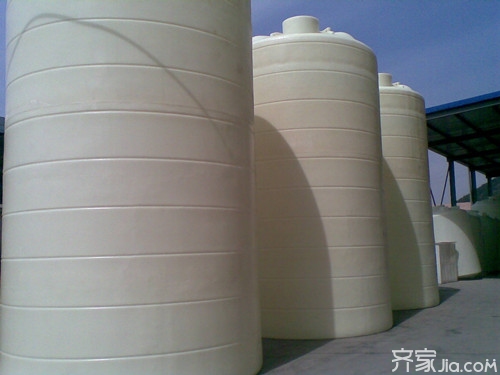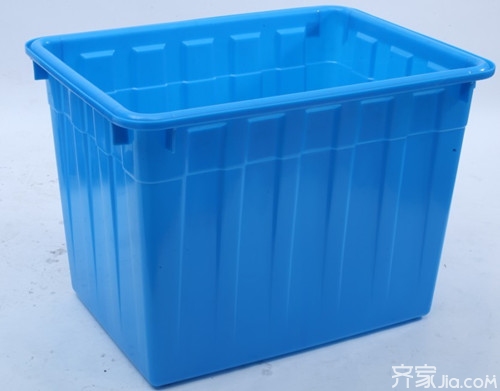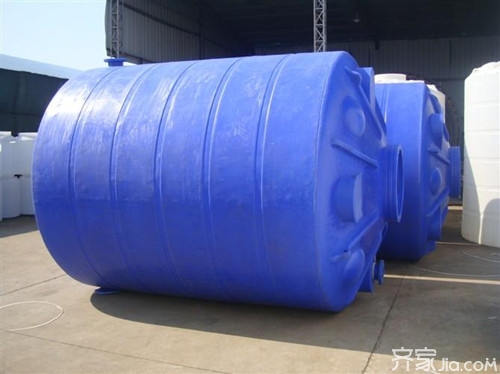Plastic water tanks include plastic water towers, plastic containers, plastic drums, plastic square boxes and other large-scale plastic containers. Plastic water tanks are mainly made of high-concentration polyethylene (HDPE), a new special rotomolding raw material. General HDPE raw materials are environmentally friendly. Acid and alkali resistance, high and low temperature resistance. The HDPE plastic water tank can reach the food grade. With the development of society, plastic water tanks have become a part of our daily life, known as a store for every family's drinking water. People's lives can not be separated from water, water can not be separated from plastic water tanks , then, what are the materials of plastic water tanks? How are the plastic water tanks related to our daily safe drinking water processed? Here I will introduce different plastic water tank materials and their advantages and disadvantages to help everyone understand such products.
Among them, the plastic water tank of the PE material is usually translucent white wax, with no gaps and good sealing performance. In addition, the entire tank is odorless, non-toxic, easy to clean, lightweight, flexible, flexible, easy to use. The plastic water tank of PE material has good physical properties and chemical stability, and it is also resistant to low temperature and acid. However, it has poor resistance to strong oxidizing corrosion and a low melting point.
The plastic water tank of PP material is the lightest in all material plastic water tanks, and the heat resistance is also the best. In addition, the plastic water tank of PP material is non-toxic and odorless, has good toughness, good chemical stability, strong gas barrier property, low water absorption, and good insulation performance. However, it is relatively soft, easy to shrink, brittle, soft, and aging. The plastic water tank of PP material cannot be in contact with hot metal for a long time. In general, the performance of the plastic water tank of the PP material is superior to that of the PE material, but the price is also higher than it.
PVC plastic water tanks have lower prices, better performance in terms of warmth and elasticity, and also have the advantages of wear resistance, acid and alkali resistance, flame retardancy and anti-microbial properties. However, the stability to light and heat is poor, and it is easy to deform and easily age during use. In addition, it also has certain toxic and carcinogenic substances. The plastic water tank of PVC material should pay more attention when used and recycled.
The HDPE material plastic water tank has good chemical stability and mechanical properties, good rigidity and toughness, high and low temperature resistance, and strong adaptability to the environment, but it is susceptible to aging. All in all, the plastic water tank of the HDPE material is environmentally friendly and harmless to the human body when used.
The first category: rotomolding production methods, a molding <br> This production method is very simple, first design the drawings of the tank, according to the shape, size, size, set the tank model, processing, once forming. This production method is mainly used to produce plastic vats, plastic drums, plastic storage tanks, PE plus tanks and other large plastic water tanks.
The second type: the main mode of production of blow molding <br> The volume of the water tank produced by these two production methods is generally small, and it can be mass produced.
The plastic water tank is made of synthetic material polyethylene (HDPE), which is also processed by our household plastic wrap. Polyethylene is more environmentally friendly and resistant to high and low temperatures, so it does not pose a safety hazard to our bodies. Secondly, in the past, most of us used iron plastic water tanks. However, over time, iron will oxidize and then rust. This poses some hidden dangers to the safety of water sources.
In addition, with the advancement of science and technology in recent years, the materials and processing methods used in plastic water tanks have become increasingly high-tech. At present, they are used in the world to form a rotomolding technology that is not only smooth and durable, but also has good UV resistance. The function will not cause the water quality to decline.
In recent years, with the increase in pollution and the increase in haze, people seem to be paying more and more attention to drinking water safety. Therefore, the use of plastic water tanks has spread to millions of households. It is believed that in the near future, plastic water tanks will be used for every family in the city.
It is believed that families who have already used plastic water tanks may find a problem: the use of long-lasting plastic water tanks shows many dirt, and some even emit odors. The so-called "crime from the mouth", in fact, many of our diseases are not only eaten out, but also drink out, so the issue of drinking water safety is of utmost importance. In view of this, the following Xiao Bian summed up the following three kinds of security decontamination tips.
Followed by baking soda, baking soda can absorb some of the air, such as free acid, and then the odor disappeared. First add warm water to the plastic water tank, melt the baking soda into the water, and wipe it off with a rag.
The last is the newspaper. This is actually the simplest. Wash the plastic water tank first, then empty the newspaper in your home, knead it up, stuff it in a plastic water tank, and wipe it again.
In fact, these methods are not only practical for cleaning plastic water tanks, but also useful for cleaning some kitchen appliances.
Editor's summary: The above is the plastic water tank production steps to explain the relevant description of the plastic water tank safety decontamination coup, I hope to help friends who have this need! For more information, please continue to pay attention to our website, follow-up will show more exciting content. You can also purchase more of your favorite products on Qijia Mall!

Among them, the plastic water tank of the PE material is usually translucent white wax, with no gaps and good sealing performance. In addition, the entire tank is odorless, non-toxic, easy to clean, lightweight, flexible, flexible, easy to use. The plastic water tank of PE material has good physical properties and chemical stability, and it is also resistant to low temperature and acid. However, it has poor resistance to strong oxidizing corrosion and a low melting point.
The plastic water tank of PP material is the lightest in all material plastic water tanks, and the heat resistance is also the best. In addition, the plastic water tank of PP material is non-toxic and odorless, has good toughness, good chemical stability, strong gas barrier property, low water absorption, and good insulation performance. However, it is relatively soft, easy to shrink, brittle, soft, and aging. The plastic water tank of PP material cannot be in contact with hot metal for a long time. In general, the performance of the plastic water tank of the PP material is superior to that of the PE material, but the price is also higher than it.
PVC plastic water tanks have lower prices, better performance in terms of warmth and elasticity, and also have the advantages of wear resistance, acid and alkali resistance, flame retardancy and anti-microbial properties. However, the stability to light and heat is poor, and it is easy to deform and easily age during use. In addition, it also has certain toxic and carcinogenic substances. The plastic water tank of PVC material should pay more attention when used and recycled.
The HDPE material plastic water tank has good chemical stability and mechanical properties, good rigidity and toughness, high and low temperature resistance, and strong adaptability to the environment, but it is susceptible to aging. All in all, the plastic water tank of the HDPE material is environmentally friendly and harmless to the human body when used.

The first category: rotomolding production methods, a molding <br> This production method is very simple, first design the drawings of the tank, according to the shape, size, size, set the tank model, processing, once forming. This production method is mainly used to produce plastic vats, plastic drums, plastic storage tanks, PE plus tanks and other large plastic water tanks.
The second type: the main mode of production of blow molding <br> The volume of the water tank produced by these two production methods is generally small, and it can be mass produced.
The plastic water tank is made of synthetic material polyethylene (HDPE), which is also processed by our household plastic wrap. Polyethylene is more environmentally friendly and resistant to high and low temperatures, so it does not pose a safety hazard to our bodies. Secondly, in the past, most of us used iron plastic water tanks. However, over time, iron will oxidize and then rust. This poses some hidden dangers to the safety of water sources.
In addition, with the advancement of science and technology in recent years, the materials and processing methods used in plastic water tanks have become increasingly high-tech. At present, they are used in the world to form a rotomolding technology that is not only smooth and durable, but also has good UV resistance. The function will not cause the water quality to decline.
In recent years, with the increase in pollution and the increase in haze, people seem to be paying more and more attention to drinking water safety. Therefore, the use of plastic water tanks has spread to millions of households. It is believed that in the near future, plastic water tanks will be used for every family in the city.
It is believed that families who have already used plastic water tanks may find a problem: the use of long-lasting plastic water tanks shows many dirt, and some even emit odors. The so-called "crime from the mouth", in fact, many of our diseases are not only eaten out, but also drink out, so the issue of drinking water safety is of utmost importance. In view of this, the following Xiao Bian summed up the following three kinds of security decontamination tips.

Followed by baking soda, baking soda can absorb some of the air, such as free acid, and then the odor disappeared. First add warm water to the plastic water tank, melt the baking soda into the water, and wipe it off with a rag.
The last is the newspaper. This is actually the simplest. Wash the plastic water tank first, then empty the newspaper in your home, knead it up, stuff it in a plastic water tank, and wipe it again.
In fact, these methods are not only practical for cleaning plastic water tanks, but also useful for cleaning some kitchen appliances.
Editor's summary: The above is the plastic water tank production steps to explain the relevant description of the plastic water tank safety decontamination coup, I hope to help friends who have this need! For more information, please continue to pay attention to our website, follow-up will show more exciting content. You can also purchase more of your favorite products on Qijia Mall!
Plastic Shower Room Plastic Carpet Water Tank Water Leakage Plastic Drawer Storage Cabinet
Aluminum Cnc Milling Parts,Custom Metal Parts,Cnc Metal Maachining,Custom Cnc Machining
JIANGSU TONGDE INTERNATIONAL TRADE CO.LTD. , https://www.tongdetrades.com